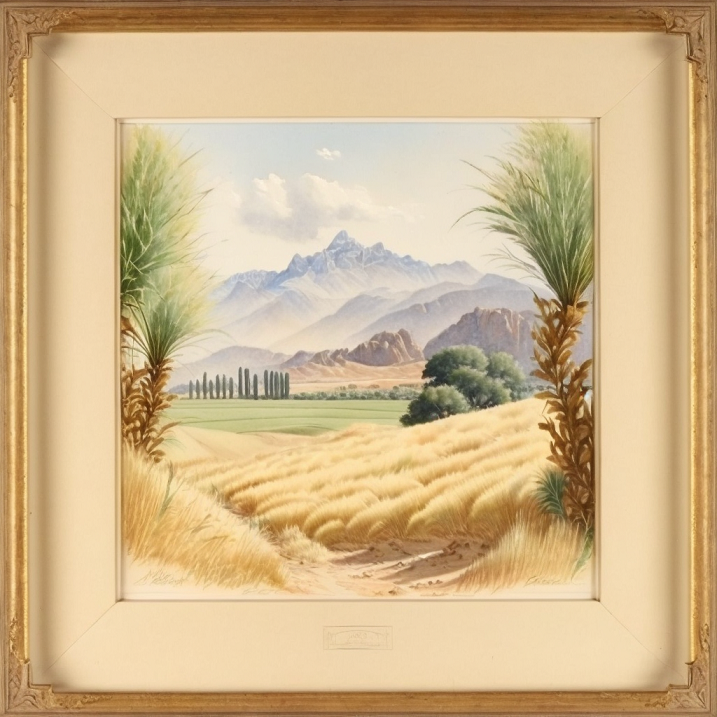Freya Stark’s name shines brightly as a courageous explorer who ventured into uncharted territories. Among her many remarkable journeys, her expedition through Ta’iz and southern Yemen during a specific historical context stands as a testament to her insatiable curiosity and resilience. Freya Stark’s enthralling adventure through Yemen’s enchanting uplands and the vibrant town of Ta’iz unfolds against a backdrop of significant changes, offering a unique glimpse into a region marked by hard-working farmers, historical landmarks, and the impact of new regulations. As we journey through Southern Yemen alongside Freya Stark, we witness a land teeming with history, culture, and a spirit of unwavering resilience. Her accounts, beautifully documented in her literary works, not only provide a vivid exploration of the landscapes and people she encountered but also reflect her profound understanding and appreciation for the diverse cultures of the Middle East. Stark’s writings thus serve as a bridge between worlds, inviting readers to share in her adventures and insights, and cementing her legacy as a pivotal figure in travel literature.
Enchanting Uplands of the Yemen
Freya Stark’s journey through Yemen transports us to the enchanting uplands, where the landscape unfurls like a painted canvas. Fields of millet, wheat, and barley stretch as far as the eye can see, framed by high peaks in the distance and dotted with thicketed acacias nestled in the gullies. These cultivated lands have been meticulously tended to by the region’s hard working peasants, whose history is deeply intertwined with the earth they nurture. The peasants, characterised by their tall stature and sturdy build, possess straight noses and regular features.
The men donned long gowns, while the women attired themselves in loose trousers and a draped tunic, all crafted from the same blue cotton homespun. Notably, a significant portion of their meagre earnings would find its way into the Imam’s coffers, underscoring their unwavering commitment to their land and community. In the midst of international events, some of their earnings were even directed to support distant causes, such as the Arabs of Palestine. The scene is set: beautiful, hard working people cultivating a land rich in history and culture.
Ta’iz: A Glimpse into the Past
Stark’s journey continued south to the town of Ta’iz, a place where history and the present coexisted in remarkable harmony. Encircled by old walls that have weathered the test of time, Ta’iz is a town that bears the imprints of the past. In the Middle Ages, during the era of the Rasulids, it thrived as a hub of wealth and learning. The echoes of this illustrious past reverberate through the town’s ancient mosque and the tombs that still stand in their enduring beauty. However, the once-thriving population had dwindled, a result of the pervasive spectre of malaria. This depopulation had cast a sombre veil over the town, even as the remnants of its grandeur stood as silent witnesses to a bygone era. The journey through Ta’iz presented a tantalising glimpse into the historical richness of Yemen, where the architectural wonders of the past harmonise with the rhythms of the present.
The Impact of New Regulations
As Freya Stark’s journey unfolded, she came to a pivotal point marked by the impact of new regulations and governance. Ta’iz, once known for its lively and vibrant culture, was now subject to change. Stark encountered the influence of a new governor, a puritanical son of the Imam. The governor had imposed a curfew, restricting the freedom of the residents with a stringent nine o’clock curfew, much to the dismay of the locals.
The curfew extended to restrictions on music and dancing, challenging the lively reputation that the ladies of Ta’iz had long held. The juxtaposition of tradition and a more conservative governance became evident, as Ta’iz’s residents navigated a shifting cultural landscape. Freya Stark’s journey provides a unique window into the impact of governance on the everyday lives and cultural expressions of the people of Ta’iz.
A Challenging Journey Through Difficult Terrain
The expedition through Yemen with Freya Stark took an adventurous turn as the landscape transitioned into a challenging terrain. This arduous journey was marked by the formidable task of navigating a landscape never intended for motorcars. An Englishman, who would later traverse the same route in the opposite direction, left behind the wreckage of five cars along the way. The path descended down high, precipitous hills, leading the way through dry, boulder-strewn stream beds and forcing the wheels to negotiate submerged boulders when water happened to flow.
The high ledges of these hills harboured the famed coffee that had made the little desert port of Mocha known worldwide. The expedition eventually emerged on the coast north of the port, where the author spent a night in a harem at the top of a high fortress tower, the governor’s residence. An unexpected musical interlude in the stillness of the night added a touch of whimsy to the journey. The following day unfolded as a laborious process of unloading and reloading their truck amid the sand dunes, as they traversed the hot, flat expanses of the Tihama region. Here, the inhabitants, with a darker complexion and mixed African heritage, sported conical dunce hats of straw and little else beyond a loincloth. The towns of Zabid and Hodeida, while evoking an air of decayed prosperity and splendour, offered glimpses of a rich but tired past.The journey continued to be a test of endurance, both for the travellers and the motorcars they navigated.
Looking back, Freya Stark’s journey into Yemen during a period of relative obscurity remains a testament to her spirit of exploration and the timeless allure of uncharted territories. It offers a historical window into a region where the past and the present converged, revealing a land teeming with culture, history, and resilience.

